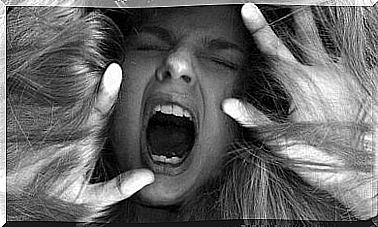Causes, Diagnosis And Treatment Of Hypothyroidism
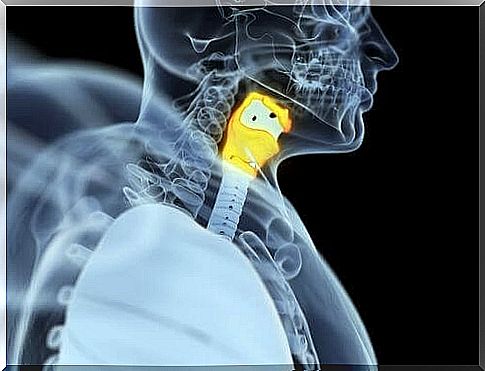
What is hypothyroidism?
Hypothyroidism or underactive thyroid is a disorder of the endocrine system. The term ‘hypothyroidism’ describes a series of clinical symptoms that ultimately lead to a reduction in the functioning of the thyroid hormone in the body’s tissues.
In this article, we look at the biological causes of this disorder.
TSH or thyrotropin is a hormone that stimulates the thyroid gland. It is produced in the anterior pituitary gland. This happens after it has received the hormone TRH from the hypothalamus. TRH is the hormone that releases the thyrotropin.
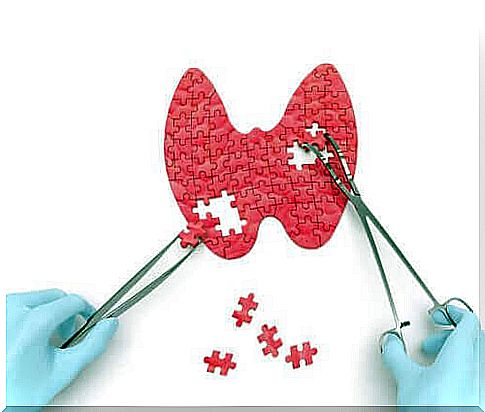
TSH attaches to specific receptors. They are located in the cells of the thyroid gland. In response, this will initiate a series of processes. Ultimately, this results in the development and secretion of thyroid hormones.
- T4 or thyroxine is only made in your thyroid.
- About twenty percent of T3 or triiodothyronine develops in the thyroid gland. The other eighty percent is made in the body tissues. T4 is used for this. An enzyme called deiodinase carries out this process.
- Part of the T4 hormone then returns to its inactive form T3r. This process is also carried out by a deiodinase enzyme.
This process is controlled by means of a feedback mechanism. When the concentration of T3 and T4 reaches its physiological value, they inhibit the production of TSH and TRH. In other words, that means they stop stimulating the secretion of these hormones.
What is the main cause of hypothyroidism?
The main cause is the drop in hormonal secretion. This is what happens in most cases. A distinction is made between types of hypothyroidism depending on the anatomical level at which this change occurs. The classification speaks of primary, secondary or tertiary hypothyroidism.
The primary form of a slow thyroid gland
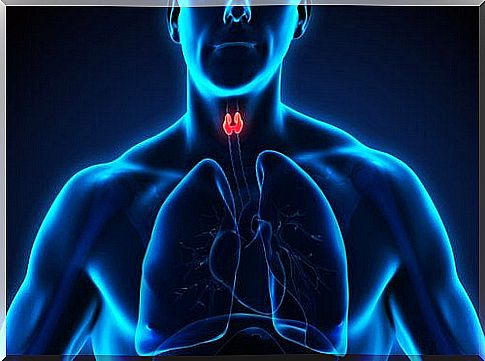
In this case, the change occurs in the thyroid itself. The gland decreases the production of thyroid hormones. Here’s an overview of the reasons why this happens:
- Due to a loss of thyroid mass. This reduces the number of glandular cells and the amount of hormones they produce. It happens when there is chronic lymphocytic inflammation of the thyroid gland (the main cause of underactive thyroid in adults). Radioactive iodine treatment may also be a cause. Or it could be the result of thyroidectomy (the complete or partial removal of the thyroid gland).
- A hereditary defect in the development of the thyroid gland.
- Deficiency of iodine in the daily diet. This is the leading cause of hypothyroidism in developing countries.
- An impediment in the production of thyroid hormones. The process by which thyroid hormone is produced consists of several steps. Any of these steps may change due to internal or external causes. When there is an internal cause, the change is due to a shortage of something during the process. If the cause is external, it will usually be a result of the use of certain medicines (lithium salts).
The hypothalamus-pituitary-thyroid axis follows a negative feedback mechanism. When the number of thyroid hormones decreases, this will cause an increase in TSH (which will eventually increase the amount of thyroid hormones).
The rise in TSH above the normal level is the clearest analytical data for diagnosing primary hypothyroidism.
Secondary hypothyroidism
This form is caused by a decreased secretion of thyroid hormones. That happens when the production of TSH in the pituitary gland drops. When the level drops below the normal level, the thyroid gland (which works normally) will be less stimulated. Ultimately, the result is a lower production of T3 and T4.
This can be due to:
- Ischemic necrosis of the thyroid gland (the gland dies because too little blood flows through it).
- The presence of tumors.
- A general failure of the anterior hypothalamus. The medical term for this condition is Sheehan’s syndrome.
- Due to a negative feedback mechanism controlling this axis. The result is a rise in the TRH hormone (to stimulate the secretion of TSH). But this increase has no effect on the hypothalamus because it is the source of the failure.
In case of secondary hypothyroidism, there is no response to increase TRH.
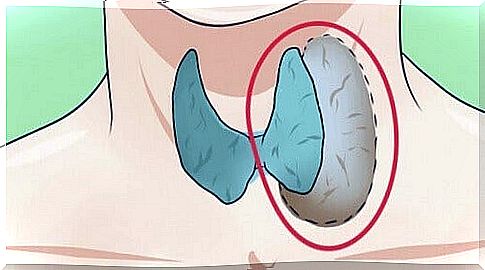
Tertiary hypothyroidism
In this form, an underactive thyroid is due to the decrease in the secretion of TRH in the hypothalamus. By decreasing the stimulation of the hypothalamus, it secretes a reduced amount of TSH. As a result, this also lowers thyroid stimulation. This in turn causes a decrease in the secretion of T4 and T3.
Even if in this case there is a decrease in thyroid hormones, there is no increase in TRH in the hypothalamus. But the defect can be corrected by external administration of TRH. If the pituitary gland responds to this, the problem can resolve itself.
Peripheral resistance of the tissues to hormones
This is rare. Mutations are then produced in your genes that are related to the receptors of the thyroid gland and that are present in the tissues.
Another very rare case is when the problem is due to the peripheral inactivity of the thyroid hormones. This may have to do with the processes in which T4 is converted into T3 or into T3r. In this situation, the conversion of T4 to T3 will be prevented. This causes a drop in T3 in the analysis. In addition, it increases the T3r. T3r is the inactive form of the hormones.
The symptoms are related to a hormonal deficiency. This translates into slowing the metabolism.
This will manifest itself in the following symptoms:
- Being constantly cold despite a normal ambient temperature.
- Pale, cold and rough skin. The skin, eyebrows and eyelashes become fragile and often fall out.
- The heart rate slows down. Blood pressure rises.
- Constipation caused by delayed bowel function.
- Less concentration and changes in language and memory. The patient notices that he moves more slowly. When control is very bad and there are major changes, a type of coma called myxedema can occur.
- Goiter can develop in cases of insufficient iodine. This also occurs when the production of T3 and T4 decreases.
- Anemia and hypercholesterolemia.
- Growth can be stunted in children.
In addition, there are a series of symptoms that occur as a result of the mucus deposition of the tissue. This secretion consists of water and hyaluronic acid. It accumulates in the tissues because the metabolism is weakened by a decrease in the polysaccharides.
- Swelling of the face. It can spread to the limbs. The medical term for swelling due to an underactive thyroid is myxedema.
- Weight gain.
- The tongue grows larger and the voice hoarse.
- Carpal tunnel syndrome
through a blood analysis. Based on this information, the doctor can determine the thyroid hormones T3 and T4 and the concentration of TSH.
General diagnosis:
- Decrease in free T3 and T3 and increase in TSH: primary form.
- Level of T3 and T4 below normal levels and reduced TSH without a response to external TRH: secondary form.
- Decrease in T3 and T4 and reduced TSH with a response to external TRH: tertiary form.
Morphological examinations by means of scintigraphy, radioactive iodine and a sonogram of the thyroid gland.
Treatment consists of replacing the thyroid hormone T4 (thyroxine). The most commonly used drug is levothyroxine. The prescription should be the smallest dose possible to bring T4 back to normal levels.






